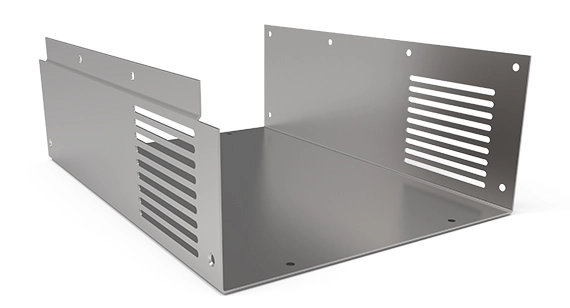Project Report For Sheet Metal Fabrication
Introduction
Project report for Sheet Metal Fabrication is as follows.
Metal fabrication is the process of creating metal components and structures by cutting, bending, and assembling them. A fab shop will bid on a job to build the end product, usually based on engineering drawings.
Large fab shops will combine a variety of value-added processes in a single plant or facility, such as welding, cutting, forming, and machining. These large fabrication shops provide added value to their customers by reducing the need for purchasing personnel to locate multiple vendors for various services.

Product & Application of Sheet Metal Fabrication
Metal sheet Fabrication is a value-added process that entails the production of machine parts, panels, and structures from various steel sheets as raw materials. Sheet metal fabrication jobs typically begin with design drawings that include exact measurements based on customer or product specifications.
The sheets are then moved to the fabrication stage, where various parts of the specified design are cut from sheets or punched, bent, formed, deep drawn, and finally all the parts are welded or fastened to produce the final product. Some of the items may be joined during the final product / project installation stage.
Get Completely Custom Bankable Project Report
Sheet Metal Fabrication shops are used by contractors, original equipment manufacturers, and value-added resellers. Typical projects include loose parts, structural frames for machines and equipment ranging from domestic appliances such as washing machines and refrigerators to furniture such as stairs and hand railings fences for buildings to industrial machine panels and automobile body parts.
Row Material of Sheet Metal Fabrication
CR Carbon steel, stainless steel, and other metals are commonly used as starting materials for fabrication, along with welding wire, flux, and fasteners to join the cut pieces. Other materials that may be used include welding electrodes, surface treatment chemicals, and so on. Customers’ specifications call for steel sheets of various grades and gauges.
Market Potential of Sheet Metal Fabrication
The Sheet Metal Fabrication Services Market was valued at USD 16.93 billion in 2021, with total Sheet Metal Fabrication Services revenue expected to grow at a 3.8% CAGR from 2022 to 2029, reaching nearly USD 22.82 billion.
Expenses

Product Cost Breakup

Reveneue Vs Expenses

Market Trend

Sheet metal fabrication is an excellent prototyping and production method for producing robust functional parts such as panels, brackets, and enclosures. The process of forming metal into thin, flat sheets that are then cut and twisted into various shapes is known as sheet metal fabrication. Sheet metal can be made of many different metals, including brass, steel, copper, tin, titanium, and aluminium.
Platinum, gold, and silver can be used for a variety of purposes, including decoration. Sheet metal is used to create a wide range of products with varying thicknesses, from extremely thin sheets (also known as foil or leaf) to larger sheets (>6mm) known as plates.
For partially flat or hollow objects, sheet metal fabrication can be a more cost-effective alternative to casting and machining. The method is also quick and wastes little material. Sheet metal fabrication is widely used in the manufacture of industrial and consumer goods, as well as specialized industries such as automotive, aerospace, energy, and robotics.

